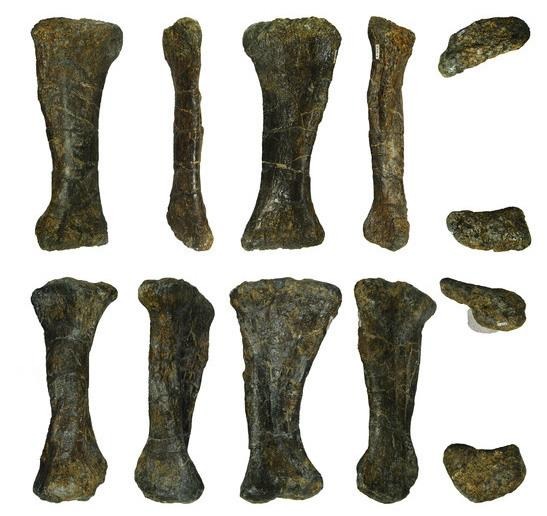New 'Whiplash' Dinosaur Species Identified From Wyoming Skeletal Remains
Back in 1995, a Swiss team of researchers excavated the skeletal remains of a sauropod dinosaur from a site in Wyoming. The remains date back to the Jurassic period and originate from a type of dinosaur that had a long neck and, most notably, a very long whip-like tail. The tail's design is responsible for the term 'whiplash' dinosaur, as the tail itself likely looked like a long, thin whip. The tail is at odds with the dinosaur's otherwise massive body.
The remains were recently discussed in a study published in the journal PeerJ, where researchers detail the unique features of this particular species. Called Galeamopus pabsti, this sauropod featured a large, thick body and very stout legs, as well as the aforementioned whip-like tail and a thick, triangular neck. This dinosaur's head attached thickly to the neck, leaving little delineation between the end of the skull and start of the spine.

The new species' name is based, in part, on the last name of Ben Pabst, one of the researchers who co-lead the team that performed the skeletal excavation. Though the reality of this dinosaur species is a newly determined thing, the skeletal remains themselves are nothing new — they've been a major exhibit at a museum in Switzerland for years.
The Galeamopus pabsti is very similar to the previously known Diplodocus, an arguably popular dinosaur and one visually recognizable by many people. Researchers determined that the neck and its attachment to the skull, as well as the huge legs, are the primary differences between the Galeamopus pabsti and the Diplodocus. Given their similarities, the two dinosaur species likely had similar diets, including things like mosses and ferns and other plant matter.
The discovery that this dinosaur was yet another distinct and unique sauropod species further highlights the highly diverse array of dinosaur remains found in the western part of the United States. Though sauropods (typically of the Diplodocid variety) are found in many places, including South America and Africa, the western portion of the US remains a hotbed of dinosaur variety, having produced remains belonging to brontosaurs and other massive extinct beasts.
Whether other sauropod remains will be found to also belong to the new pabsti species is unclear. This, of course, isn't the first time in recent history that researchers have identified a new type of dinosaur. Last last year, for example, researchers identified a new dinosaur species called the Savannasaurus from skeletal remains found more than a decade ago in Australia.
SOURCE: PeerJ
